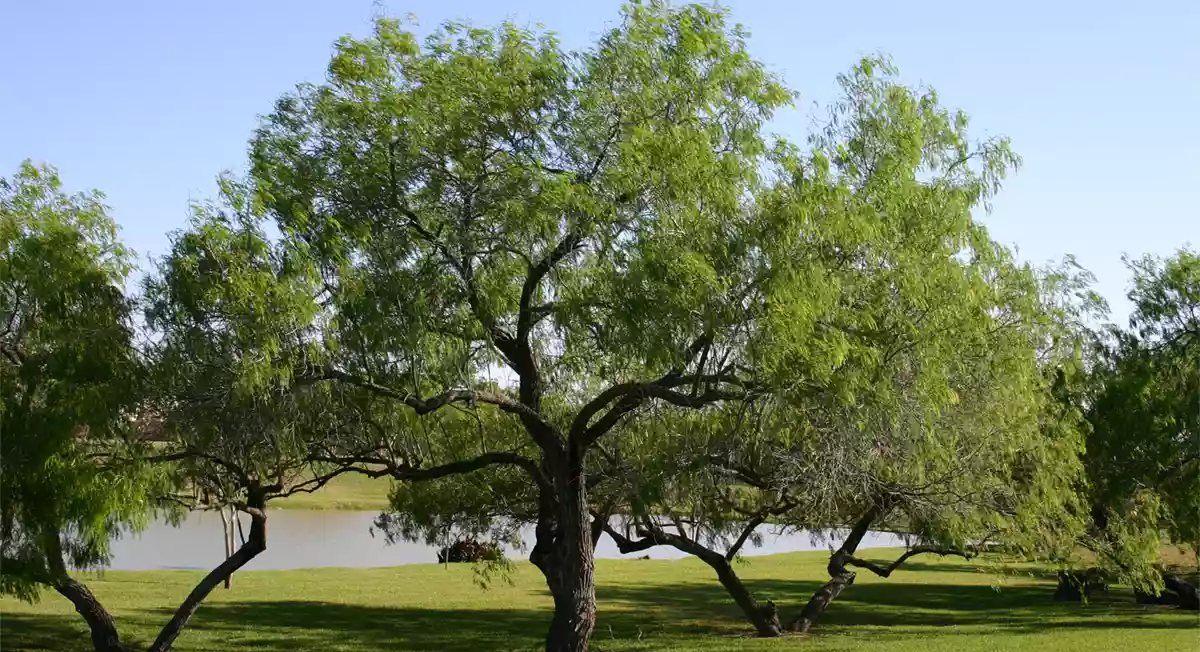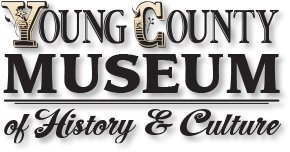
Mesquite Trees
It’s hard to imagine Young County was once described as “open Prairie”.
Settlers and Native Americans alike commented on the “oceans of grassland and vast prairies” of Texas where the buffalo could graze, and you easily become lost for lack of landmarks in 1841.
A portion of northeastern Young County was known as “Lost Prairie” because of its open spaces and lack of landmarks. So what made such a dramatic change to the Texas landscape?
The “beloved” Mesquite tree. (Texas ranchers and farmers, don’t shoot the messenger!) The Mesquite tree was not native to Texas originally. The tree is native to Mexico and other parts of Central and South America. It was slowly moving north, but man sped up the northern migration when cattle, which had eaten the bean pods, were then herded to Texas markets.
Most cattle were quarantined around the Texas shipping port of Galveston, but herds that slipped by quarantine and other herds that were pushed north eventually left the bean pods undigested in the perfect fertilizer – their dung! As the trees grew and prospered, they dropped more seed pods which were again eaten by animals, resulting in more migration north in a very short amount of time.
By 1854, J.R. Bartlett, states in his book “Personal Narrative of Explorations and Incidents in Texas, New Mexico, California, Sonora and Chihuahua” that much of Texas rangeland was open grasslands with “some” scattered large mesquite.
Most of Texas at that time was open prairie with scattered Post Oak and Cedar trees, depending on where you were standing in Texas. By 1866, however, Captain Randolph Marcy, in his memoir: “Thirty years of army life on the border” described some areas of north central Texas as “covered with groves of mesquite trees”, and an area in the lower Texas panhandle as “one continuous mesquite flat, dotted here and there with small patches of open prairie”.
These observations indicated that mesquite had rapidly become a natural part of the Texas vegetation complex, prior to white settlement in those areas and, in some areas, occurred as dense stands.
The mesquite tree is an amazing work of nature. The tree’s wood is a good firewood choice as it burns very slowly. It was, and still is, used as a building material due to its durability.
Here are some interesting facts about the Mesquite Tree discovered from the GardeNerdy website:
- A major use of mesquite is that it is a nitrogen-fixing tree, which means that it restores nitrogen in the soil.
- The improved fertility is the reason why some grasses grow very well under these trees.
- Its lateral roots might spread out up to 50 feet in all directions, and compete with grasses for water, absorbing water from the subsoil layers.
- The tree can easily switch from utilizing one water source to another. This means it will take water to survive from other nearby plants in drought conditions.
- Mesquite taproots can extend as much as 200 feet below the surface and the surface roots may extend 50 feet or more past the outer edge of the crown.
- About 5-20 seeds are enclosed in a pod, and the seeds can lie dormant for several years.
- Nectar from mesquite trees is also known to yield a good-quality honey.
- The wood is still used for making carvings, panels, furniture, and parquet floors. Its brown and gold color and swirling grain makes it the perfect type of wood for making furniture with a rustic appeal.
- Its bark is used for roofing in some regions.
Various parts of the tree were used by the Native Americans. The tree bears thorns that are about 3 inches long, which were used by the Native Americans to make needles. The inner bark was used for making fabrics, while its wood was used for making bows and arrows for hunting. Native Americans used the bean pods of this tree for food. The pods were ground to make flour, which in turn was used for making several different dishes. The pods were also used for making a therapeutic tea. Mesquites were used by Native Americans for treating certain ailments. They were aware of the therapeutic nature of the tree’s root, bark, leaves, and gum. They used a herbal infusion made from the root or bark to treat diarrhea. They also mixed the gum in water to make a herbal infusion, which was used for treating eye infections. Mesquite gum was also used for treating sore throat and gastrointestinal problems.
They crushed mesquite leaves and mixed them with water. This was used as a remedy for headaches.” Ironically, cattlemen have “gotten” headaches from trying to remove Mesquites, which cattle brought here in the first place!
Finally, you can’t enjoy barbecue in Texas if it doesn’t have that distinct mesquite smoked flavor!
If you’re blessed to live in Young County, or other parts of Texas, imagine what the early settlers used to see when they looked across the land to the horizon.
Imagine the hopes, dreams, struggles, (and mesquite!) that built Young County and helped shape the State of Texas, and even affected the policies of a nation!
There are stories where mesquite figures prominently in our history. Want to know more? Come see us at the museum to find out!

